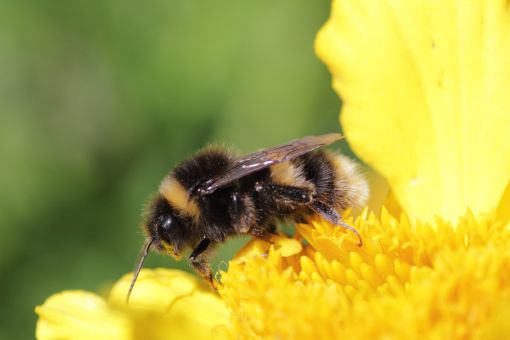What you can really see
0
Overview
Using this Resource
Connecting to the Curriculum
Marking Student Responses
Working with Students
Further Resources
This task is about what you can see and what you might know but can't see.
Task administration:
This task can be completed online or with pencil and paper. If students do the task on paper they could work in pairs to compare their ideas and decide on which idea/s provide/s the best evidence.
Downloadable pencil and paper assessment.
Copyright:
All images copyright to PhotoKete are used with permission and can be freely used for educational purposes in New Zealand Aotearoa.



Levels:
1, 2
Curriculum info:
Key Competencies:
Keywords:
Description of task:
Task: Make careful observations of a picture to decide what you can see and what you might know but can't see.
Curriculum Links:
Science capabilities
The capabilities focus is brought about by the conversations students have and the questions they ask.
The capabilities focus is brought about by the conversations students have and the questions they ask.
Capability: Gather & interpret data
Science knowledge is based on data derived from direct, or indirect, observations of the natural physical world. An inference is a conclusion you draw from observations e.g., the meaning you make from observations. Understanding the difference is an important step towards being scientifically literate.
Science knowledge is based on data derived from direct, or indirect, observations of the natural physical world. An inference is a conclusion you draw from observations e.g., the meaning you make from observations. Understanding the difference is an important step towards being scientifically literate.
This resource provides opportunities for students to make observations in order to answer questions about what is evidence and what is inference.
Science capability: Gather and interpret data (Tāhūrangi)
Science capability: Gather and interpret data (Tāhūrangi)
Science capabilities:
Answers/responses:
| Correct responses | |
|
a)
|
 |
|
b)
|
 |
|
c)
|
 |
Based on a sample of 57 Year 1 and 2 students completing the assessment online.
Teaching and learning:
The key ideas in this resource are about:
- making observations e.g., what can be seen (evidence)
- making inferences e.g., a conclusion you draw from observation.
Diagnostic and formative information:
| Questions | Student observations |
|
Bird
a) Put the sentences about what you can see and what you can't see from the picture into the boxes.
|
|
|
Cow
b) Put the sentences about what you can see and what you can't see from the picture into the boxes.
|
|
|
Bumblebee
c) Put the sentences about what you can see and what you can't see from the picture into the boxes.
|
|
Based on a sample of 57 Year 1 and 2 students completing the assessment online.
Next steps:
This assessment is about the capability of gathering and interpreting data. Science knowledge is based on data derived from direct, or indirect, observations of the natural physical world. In this resource students are asked to differentiate between observation and inference. An inference is a conclusion you draw from observations e.g., the meaning you make from observations. Understanding the difference is an important step towards being scientifically literate.
This assessment asks students about the difference between what is seen e.g., observation/evidence and what is not seen e.g., inference. To help students differentiate between observation and inference, students could be asked:
- Is it something we can see, hear, smell, touch, or taste? Is it measurable? (observation)
- What did you see? (observation); What might that mean? (inference).
Students in the trial were able to more easily identify what could be seen but found it much harder to identify inferences. Exceptions were:
- this bird is singing
- this cow is tired
- this bumblebee is old
If students placed these inferences correctly ask them why they answered this way. They may find it easy to identify an inference which is clearly not observable e.g., the bird's beak was not open (assumption: so it was not singing) or the inference related to states e.g., old and tired.
For students who found it difficult to correctly identify inferences ask them why they answered this way. They may be mistaking what they know as something that can be seen in this specific photograph.
To support students to differentiate clearly between observation and inference you could give them opportunities to:
1. make observations, e.g.,
- List the features of animals they can see in a picture/photograph e.g., feathers, wings etc
- List what they can really say is happening in a picture/photograph e.g., when the focus is on actions such as running, flying etc
This may seem pedantic (we all know that bees can fly). However, in more complex contexts, things we think we "just know" can lead us astray. This capability is about building the habit for making direct observations.
2. explore inference, e.g.,
- What do their observations in the picture/photograph mean?
- What do they already know rather than what they see?
3. share with their peers so they build on others' ideas
- Find pairs of pictures that show animals in action and at rest. Ask students what is the same and what is different in th pictures.
- Create their own resource or work as a pair to make a statement or statements about what can be seen and what can't be seen in a picture/photograph and ask a peer to trial their resource.
Other Science resources at Level 1:
- Poaching eggs
- Food colouring in water
- Cooking
- Watching ice melt
- Soil
- Describing trees
- Popcorn
- Sugar and water
- Changes to our piece of pumpkin
- Insect protection
- The monarch: chrysalis to butterfly
- Amongst the sand dunes
- Roads
- Moths and butterflies
- A lamb on the farm
- The drain
- Cattle
- Whose nest is this?
- River in flood
- What makes you think that?

